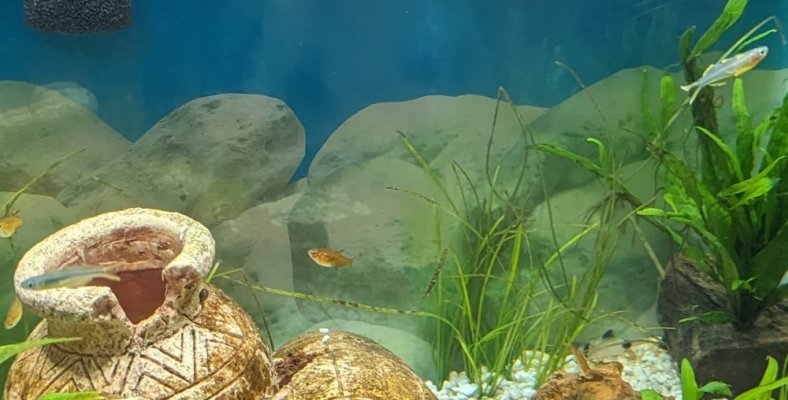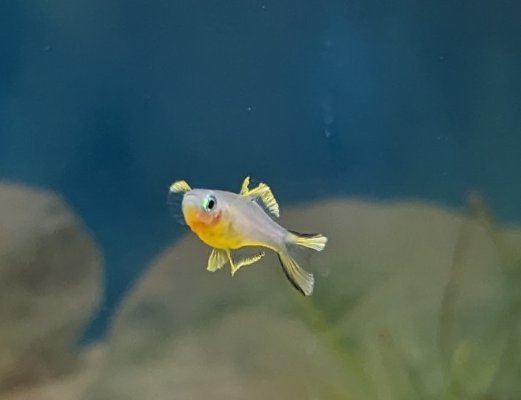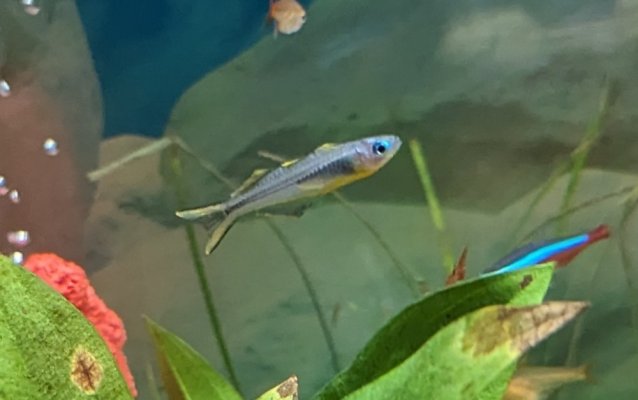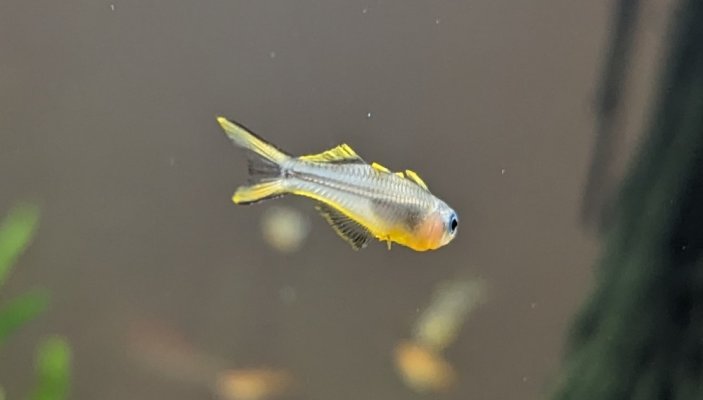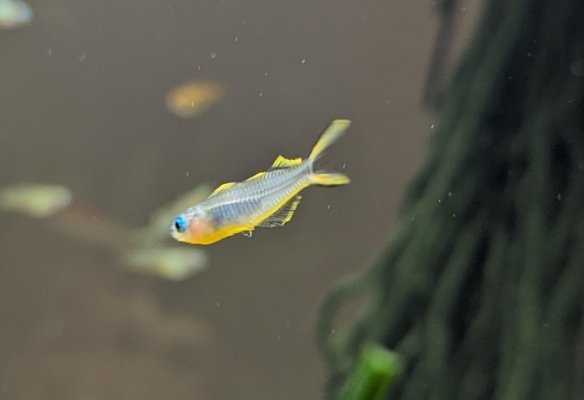Hello,
Question re. one of my male furcata rainbowfish ...
I have two males and four females in this tank, and I've been noticing over the past few days that one of the males is quite hyper, displaying all of his bright colors and chasing females all over (also chasing his reflection in the glass) ... however, the other male is causing me some concerns. He is much more passive than the other one, much less colorful and his 'stomach' (at least, what I believe to be his stomach) is much darker than the active one. Finally, the passive fish seems to have something protruding from it.
Hopefully the pictures will shed some light on what I'm trying to explain.
One picture shows both fish, so you can see the difference in the color of their 'stomachs'. There's one picture highlighting the active fish and another showing the passive one. Finally, two pictures showing something protruding from the fish of concern. Likely poop but not 100% sure ...
Any thoughts/suggestions?
Thanks as always!
Question re. one of my male furcata rainbowfish ...
I have two males and four females in this tank, and I've been noticing over the past few days that one of the males is quite hyper, displaying all of his bright colors and chasing females all over (also chasing his reflection in the glass) ... however, the other male is causing me some concerns. He is much more passive than the other one, much less colorful and his 'stomach' (at least, what I believe to be his stomach) is much darker than the active one. Finally, the passive fish seems to have something protruding from it.
Hopefully the pictures will shed some light on what I'm trying to explain.
One picture shows both fish, so you can see the difference in the color of their 'stomachs'. There's one picture highlighting the active fish and another showing the passive one. Finally, two pictures showing something protruding from the fish of concern. Likely poop but not 100% sure ...
Any thoughts/suggestions?
Thanks as always!

